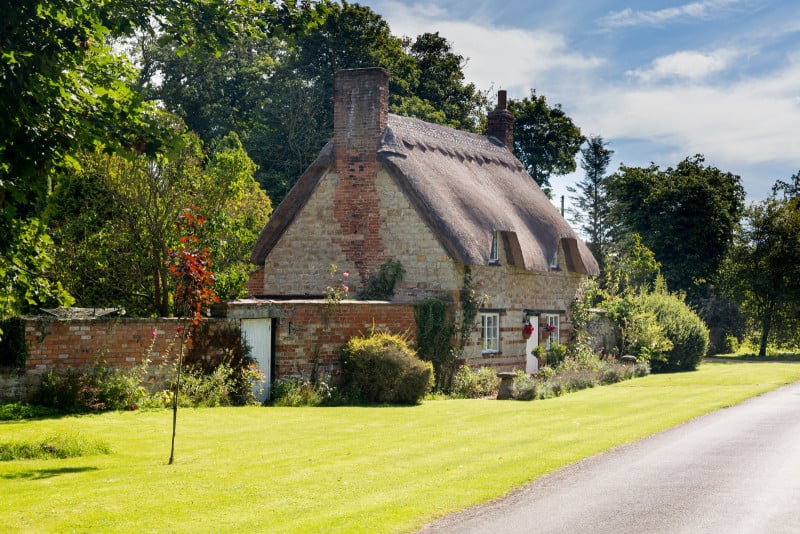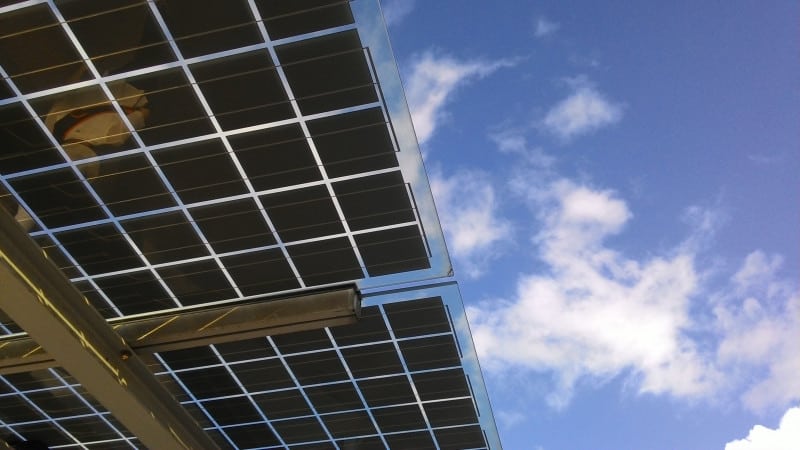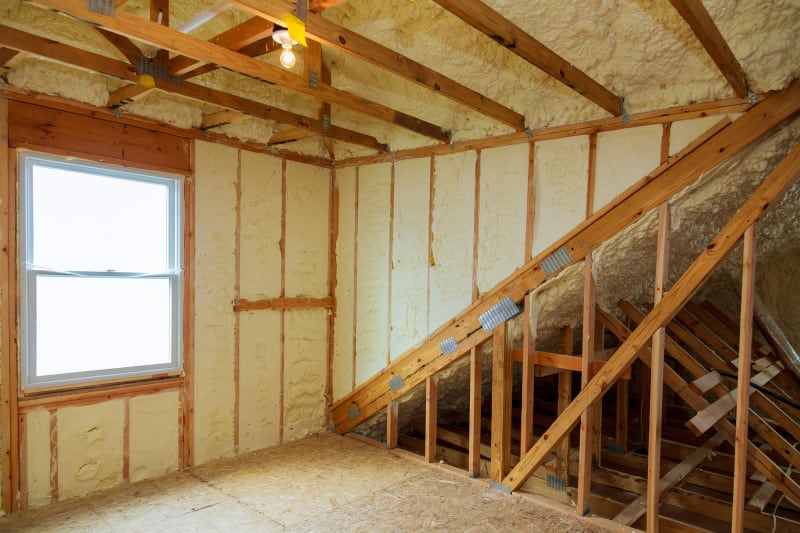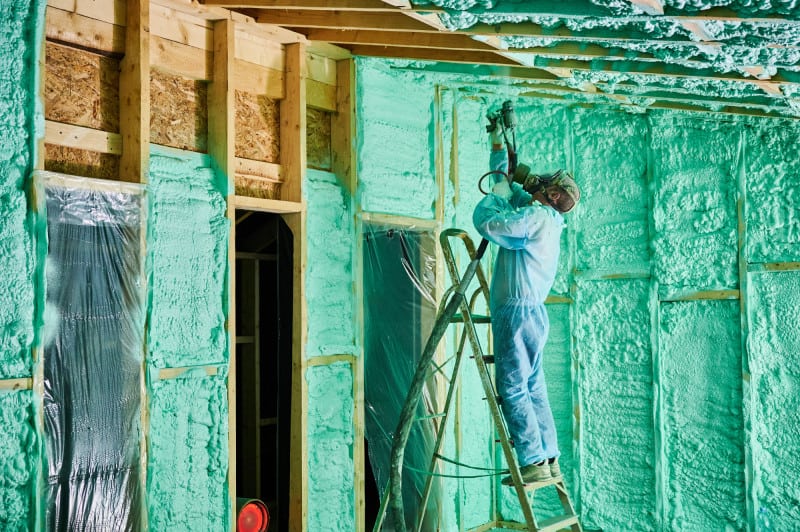Have you ever been inside an old house on a hot summer day and noticed that it felt like an oven?
Or perhaps you’ve visited one during the winter and found yourself shivering in the cold?
I experienced this recently and asked myself, “Why are old houses not insulated?”.
After doing some research, I learned people did not use insulation in older homes because the materials and techniques were not widely available.
In the past, homeowners and builders were less concerned about energy efficiency and insulation due to lower energy costs.
Many older homes were constructed with thicker walls and other features that helped to insulate the home, such as wood paneling or plaster.
Retrofitting insulation can be expensive and difficult, so many old homes remain uninsulted even to this day.
The Historical Context of Old Homes & Insulation
Insulation was rarely used in older homes for several reasons.
During the 19th century, most houses were constructed from thick masonry walls or double-studded framing with layers of plaster and lath.
This provided some R-value insulation due to the thickness of the materials and their ability to absorb heat.
Many traditional building styles, such as post-and -beam construction, didn’t have insulation installed because it wasn’t easy to achieve, given the construction methods available at that time.
During that period, energy conservation wasn’t a priority as heating sources such as wood and coal were plentiful and inexpensive.
Even more recently in the 20th century, fiberglass insulation was not widely adopted until well after World War II when energy costs began to rise significantly in response to rising fossil fuel prices.
Therefore, many older homes simply weren’t insulated, since it wasn’t deemed necessary or cost effective until much later on.
The Building Materials Used In Old Homes & Their Insulating Properties
The materials used to build older homes were not as well equipped for insulation as modern materials are today.
Instead, they relied more on airtight construction and thick masonry walls.
While the use of brick can provide some insulation in the form of thermal mass and slow heat transfer, it’s still not as effective as modern materials such as fiberglass or foam insulation.
Other common building materials such as wood, plaster, concrete and stone provide little to no insulating properties.
Older buildings often have single pane windows which should be replaced with double-paned glass for better insulation value.
In many cases, old houses didn’t include any type of mechanical ventilation either, so it wasn’t possible to prevent hot or cold air from entering the home effectively without insulation material present.
How Modern Insulation Differs from Traditional Methods
Modern insulation is a much more advanced technology than its traditional counterparts.
In older homes, builders used materials such as straw, sawdust, newspapers and even rocks for insulation.
All of these materials were bulky and did not provide consistent or adequate thermal protection from the elements.
Today’s insulation products are designed to be lightweight and effective in controlling temperature fluctuations inside the home.
Commonly used insulations include fiberglass batting, cellulose, foam board and spray foam.
These materials come in pre-cut sizes, which makes them easier to install within walls and ceilings than the bulky alternatives that were common in older homes.
Newer insulating materials are often treated with fire retardants or pest repellents to help protect against potential hazards that may arise over time as well as making them less attractive for pests looking for shelter or sustenance in your home.
The Economic Factors That Influence Insulation In Older Homes
Insulating older homes was not as common when these buildings were constructed, and homeowners are now forced to grapple with the costs of retrofitting insulation into their homes.
The reality is that insulating an older home can be expensive, and some people may simply not have the resources to fund such a project.
Even though there are government programs and tax credits available to help make energy efficiency upgrades more affordable, they may still require a large amount of money up front that some people just don’t have.
The cost of materials and labor needed for retrofitting insulation into an old home can add up quickly, making it much more expensive than in newer construction projects with open walls that are easier to work on efficiently.
Common Problems With Insulating Older Homes Today
One of the major challenges for insulating older homes today is that there is often not enough space to fit modern insulation.
Older houses typically had walls and ceilings built with narrow framing, so adding new insulation requires careful consideration.
Many older homes don’t have any existing right-sized cavities to fill with insulation around pipes or wiring, making it difficult to insulate without compromising appearance or safety.
On the other hand, some old homes may have too much open space in their walls and ceilings, which can cause air leaks and drafts that reduce energy efficiency if left unaddressed.
A lack of proper ventilation can also cause moisture to build up in the walls or roof over time, potentially leading to mold growth if not managed properly.
Finally, certain types of insulation cannot be used due to age-related issues, such as asbestos present in some older materials.
Strategies for Retrofitting Insulation Into Old Homes
One of the challenges with retrofitting insulation into older homes is that it can be very difficult to find where to install the insulation.
Many older homes were built before energy efficiency and modern insulation materials even existed, so they don’t have many walls open or spaces ready for new material.
In these cases, homeowners may need to consider taking out drywall in order to access any existing wall cavities, or adding additional framing around window and door openings in order to fill them with insulation.
Alternatively, there are some spray foam products that can be applied directly onto existing walls without removing existing drywall.
Homeowners should also take into account potential airflow barriers created by filling existing wall cavities with insulation when retrofitting an older home, as this could lead to moisture buildup or mold issues over time.
Installing a vapor barrier on both sides of exterior walls is also recommended when adding new forms of insulation into old homes, as this helps protect against air leakage and moisture buildup in the future.
Balancing Preservation with Energy Efficiency in Older Homes
Balancing preservation with energy efficiency in older homes can be a tricky balancing act.
On the one hand, you have the desire to preserve and maintain the historical integrity of your home, while on the other hand, you want to ensure that it’s as energy efficient as possible.
Fortunately, there are many strategies available today that make it easier to bring an old home up to modern standards without sacrificing its character or charm.
Options like foam insulation and spray foam insulation not only provide superior levels of thermal protection for older homes, but they also come in a range of colors and textures so that you can customize your insulation solution according to your individual needs and preferences.
These materials are highly durable and long-lasting, which makes them ideal for use in older homes where maintenance may be more difficult than with more modern homes.
The Future Of Insulation for Historic & Older Homes
As we continue to prioritize energy efficiency and sustainable building practices, it’s important to consider the future of insulation in older homes.
While certain traditional methods may not be suitable for modern buildings, there have been a number of innovative solutions developed over recent years.
These include spray foam insulation, which can be applied in smaller areas than conventional fiberglass or mineral wool batts and also offers superior soundproofing capabilities.
Newer materials such as cellulose or cotton fiber insulation provide excellent thermal performance and are more eco-friendly than their predecessors are.
Advanced technologies like geothermal heating systems enable homeowners to tap into renewable sources of energy without compromising the structural integrity of their home.
With the right combination of old and new methods, homeowners can enjoy increased comfort while preserving their historic houses for future generations.
Conclusion
Older homes were not insulated because energy efficiency was not a priority at the time of construction.
The materials used to build older homes were not equipped for insulation as they relied on thick walls and airtight construction.
Modern insulation is a more advanced technology that offers a better thermal protection than traditional insulation methods.
Retrofitting insulation can be expensive and challenging, especially in cases where the existing walls have no cavities.
Homeowners can consider taking out drywall or adding additional framing around windows and door openings to access existing wall cavities.
Despite the challenges, insulating older homes is important in reducing energy consumption and cutting energy costs.







